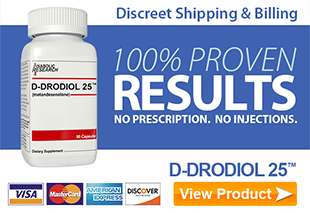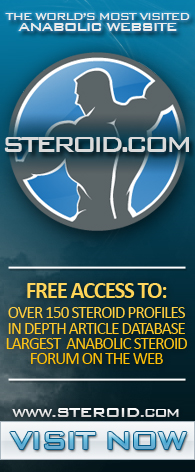Oxymetholone
Oxymetholone (Anadrol, Anadrol 50, Androyd) is one of the most popular anabolic steroids of all time in both performance and medical circles. It also represents one of the oldest steroids on the market. Provided by both Syntex and Park Davis & Co. in the 1960’s, Oxymetholone hit the market in an effort to treat muscle wasting diseases, osteoporosis and any such related conditions. While still used for such purposes today, Oxymetholone is also used to treat the low red blood cell condition anemia, and in the U.S. is one of the only reasons the steroid is prescribed; most commonly to HIV patients.
While carrying numerous therapeutic benefits, many of which have been ignored by the FDA despite medical evidence, most who are interested in Oxymetholone are so for the purpose of performance enhancement. If it’s good for treating a muscle wasting disease it’s going to be good for building muscle mass, and this is the primary reason this steroid is a favorite of many performance enhancing athletes.
Oxymetholone is an extremely estrogenic steroid. A dihydrotestosterone (DHT) derivative, like all DHT compounds it does not aromatize but Oxymetholone still carries strong estrogenic traits. Due to this estrogenic nature as well as its tremendous anabolic nature, users of this steroid often report gains of 20-30lbs in only a few weeks, and that’s not an exaggeration. This makes Oxymetholone one of the premier off-season steroids for many athletes, and overall that will be its only performance purpose in a general sense. Of course, as we’ll see later on, competitive bodybuilders often use this steroid for contest prep at the very end, but in the grand scheme of things this is a bulking steroid.

Due to its strong estrogenic nature coupled with its DHT composition, the side effects of Oxymetholone can be quite extensive. This steroid will carry nearly every last primary possible side effect of anabolic steroid use. Not only does this include things like gynecomastia, water retention, hair loss and acne, but it also includes liver toxicity. Oxymetholone is an oral steroid belonging to the C17-alpha alkylated (C17-aa) class of medications, and of all C17-aa steroids it is one of the most liver toxic.
While carrying only a moderate androgenic rating, Oxymetholone tends to display androgenic traits that are far beyond what its rating would imply. For this reason, Oxymetholone is not recommended to women as it will produce strong virilization symptoms. Women who are looking for anabolic assistance will find other DHT compounds such as Oxandrolone (Anavar) or Methenalone (Primobolan) to be far more valuable as well as safer.
Like many anabolic steroids, Oxymetholone is plagued by myths and half-truths; however, in this case it may be a little more so. As we dive into this powerful anabolic steroid, we’ll do our best to separate fact from fiction; we’ll do our best to separate misconceptions about this steroid in comparison to Methandrostenolone (Dianabol), which are the most common misconceptions of all. We’ll look at the primary Oxymetholone traits, how they translate into benefits, the side effects of the steroid, and of course, what you can do to avoid them and remain safe. We’ll cover every last aspect of the Oxymetholone hormone, and enable your supplementation experience to be successful should you choose to undertake it.


